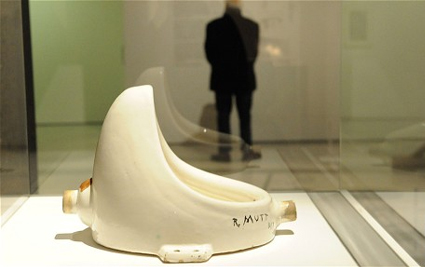“Dancing Around the Bride” at the Barbican.
What is art? What is its purpose? Who is it for? A young man called Robert Rauschenberg settled in New York in 1949 and asked himself questions. He liked the vibrant chaos of Manhattan, its incessant noise and inhumanly tall buildings. He liked the city’s junk, a universe of distressed objects washed up by the tides of chance, and was entertained by the on-off flicker of ephemeral messages blurted out by its signage. He made assemblages from materials he found on the street – discarded shoes, stuffed animals, scraps of aluminium. “If I walked completely around the block and didn’t find enough to work with, I could take one other block and walk around it in any direction – but that was it. The works had to look at least as interesting as anything that was going on outside the window.” His Trophy IV (for John Cage), of 1961, is a tar-stained wooden pallet used as the plinth for, among other things, a ramshackle gallows from which an old boot dangles, two towers of pipework and a flashlight on a chain. It is a picture puzzle in object form, as well as the manifesto for a new kind of American artist: not a priest or a self-proclaimed hero, as the Abstract Expressionists had been, but a more playful and ironic figure, alive to the surge and sprawl and unpredictability of raw, actual life.
“Dancing Around the Bride”, at the Barbican Art Gallery, explores a sea-change in post-war American sculpture, painting, dance and music; and examines one of its main sources of origin. It tells of the love, friendship and play of influence between two artists, a composer and a choreographer, and of their mutual respect for a key figure of the European avant-garde:...


